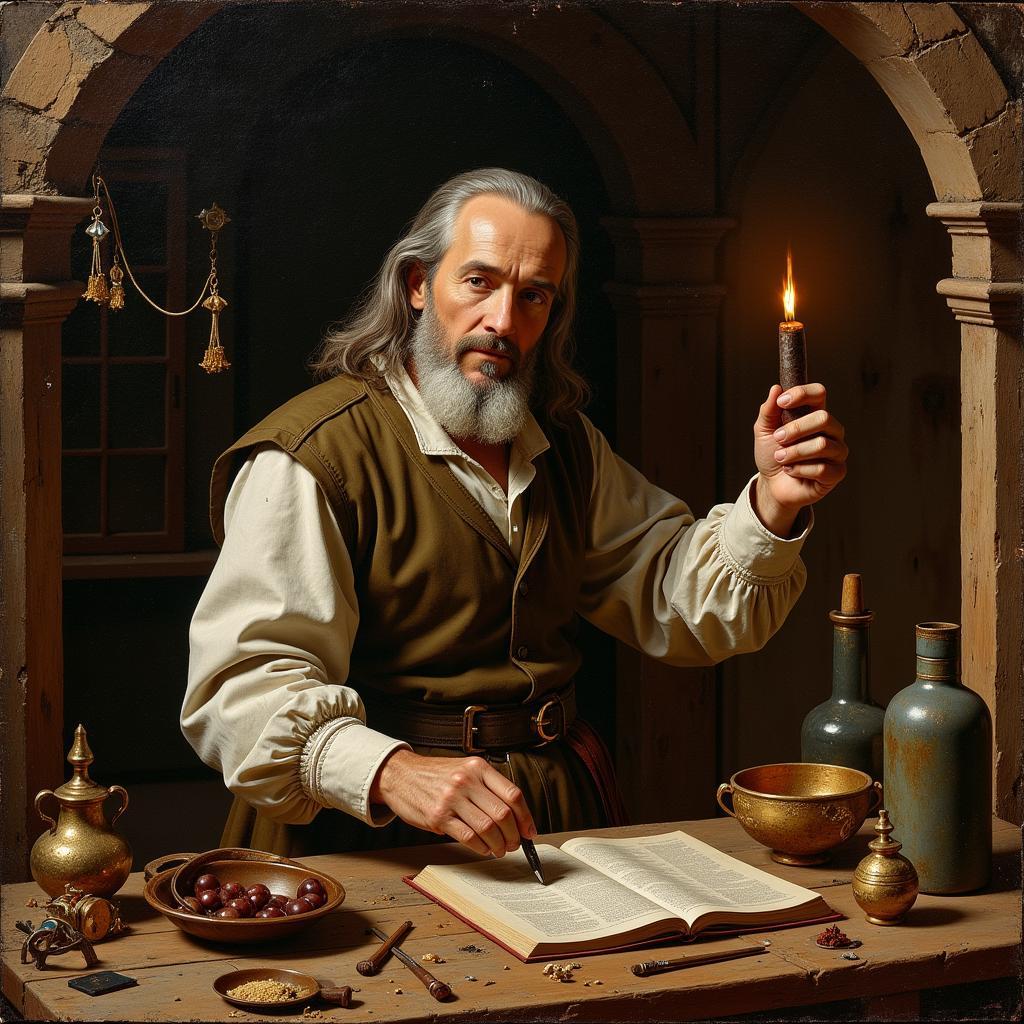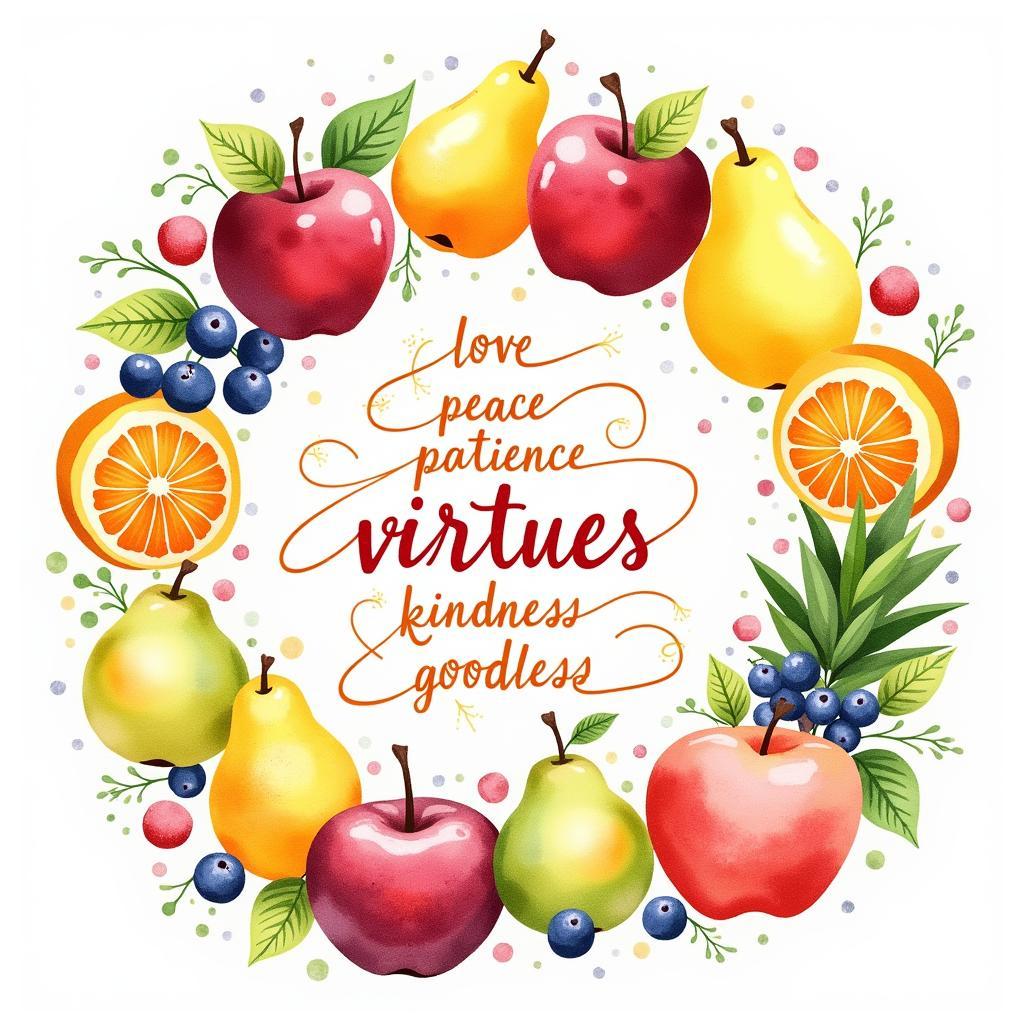Exploring the Mystical Art of Hermes Trismegistus
Hermes Trismegistus, the thrice-great Hermes, a figure shrouded in mystery and revered as the father of Hermeticism. His influence permeates art, philosophy, and alchemy, leaving an indelible mark on Western esoteric traditions. This exploration delves into the fascinating intersection of art and Hermes Trismegistus, unveiling the symbolism, philosophies, and artistic expressions inspired by this enigmatic figure.
Unveiling the Symbolism of Hermes Trismegistus Art
Hermetic art isn’t just about aesthetics; it’s a visual language, rich with symbolism that speaks to the core tenets of Hermeticism. From the Emerald Tablet to the Caduceus, each symbol holds a profound meaning, inviting us to delve deeper into the mysteries of the universe. The Caduceus, often depicted as two serpents entwined around a winged staff, represents the duality and balance of opposing forces, a key principle in Hermetic thought. Similarly, the Emerald Tablet, inscribed with the famous dictum “As above, so below,” reflects the interconnectedness of the microcosm and macrocosm.
What draws artists to these symbols? Perhaps it’s the inherent mystery, the invitation to explore the hidden dimensions of reality. Or maybe it’s the power of these symbols to evoke a sense of wonder and connection to something greater than ourselves.
Hermeticism’s Influence on Artistic Expression
Throughout history, artists have drawn inspiration from Hermeticism, weaving its philosophical threads into their creations. From the Renaissance masters to contemporary digital artists, the influence of Hermes Trismegistus can be seen in diverse artistic mediums. Think of the alchemical imagery in the works of Renaissance artists, the hidden symbolism embedded in their paintings, reflecting the Hermetic quest for transformation and enlightenment.
How did Hermeticism shape artistic vision? It encouraged artists to look beyond the surface of reality, to explore the hidden dimensions of existence, and to express these insights through their chosen medium.
 Renaissance Art and Hermetic Alchemy
Renaissance Art and Hermetic Alchemy
The Role of Alchemy in Hermes Trismegistus Art
Alchemy, a central theme in Hermeticism, plays a significant role in art inspired by Hermes Trismegistus. It’s not just about transmuting base metals into gold; it represents the process of inner transformation, the journey towards spiritual enlightenment. Alchemical imagery often appears in Hermetic art, symbolizing this process of purification and evolution.
“Alchemy is not just about transforming matter; it’s about transforming the self,” says Dr. Elias Thorne, a renowned scholar of Hermeticism. “This inner transformation is often reflected in the symbolic language of Hermetic art.”
Contemporary Interpretations of Hermes Trismegistus Art
Today, artists continue to engage with the themes and symbolism of Hermes Trismegistus, using digital tools and innovative techniques to create captivating and thought-provoking works. The fusion of ancient wisdom and modern technology offers exciting possibilities for exploring the enduring relevance of Hermeticism in the 21st century.
“The digital age allows us to explore Hermetic concepts in entirely new ways,” states Anya Petrova, a leading digital artist specializing in Hermetic themes. “We can create immersive experiences that engage the viewer on multiple levels, inviting them to embark on their own journey of discovery.”
Conclusion: The Enduring Legacy of Hermes Trismegistus Art
From ancient mysteries to modern expressions, the art inspired by Hermes Trismegistus continues to captivate and inspire. It invites us to explore the depths of our own being, to connect with the wisdom of the ages, and to embrace the transformative power of Hermetic philosophy. Exploring the art of Hermes Trismegistus is an ongoing journey, a quest for understanding and self-discovery.
FAQ
- What is the meaning of Hermes Trismegistus? Thrice-great Hermes, a syncretic combination of the Greek god Hermes and the Egyptian god Thoth.
- What is the Emerald Tablet? A Hermetic text containing key principles of Hermetic philosophy.
- What is the Caduceus? The staff of Hermes, often depicted with two entwined serpents, symbolizing duality and balance.
- What is the connection between Hermes Trismegistus and alchemy? Alchemy is a central practice within Hermeticism, representing both physical and spiritual transformation.
- Where can I find examples of Hermes Trismegistus Art? From Renaissance paintings to contemporary digital art, examples of Hermetic-inspired art can be found in museums, galleries, and online platforms.
- How is Hermeticism relevant today? Hermetic philosophy continues to offer valuable insights into self-discovery, spirituality, and the interconnectedness of all things.
- What are some key themes in Hermes Trismegistus art? Common themes include alchemy, symbolism, cosmology, and the pursuit of spiritual enlightenment.
Need further assistance? Contact us at Phone Number: 02462573573, Email: danteum@gmail.com Or visit us at: Savico Megamall, 7-9 Đ. Nguyễn Văn Linh, Gia Thụy, Long Biên, Hà Nội 10000, Việt Nam. We have a 24/7 customer service team.



